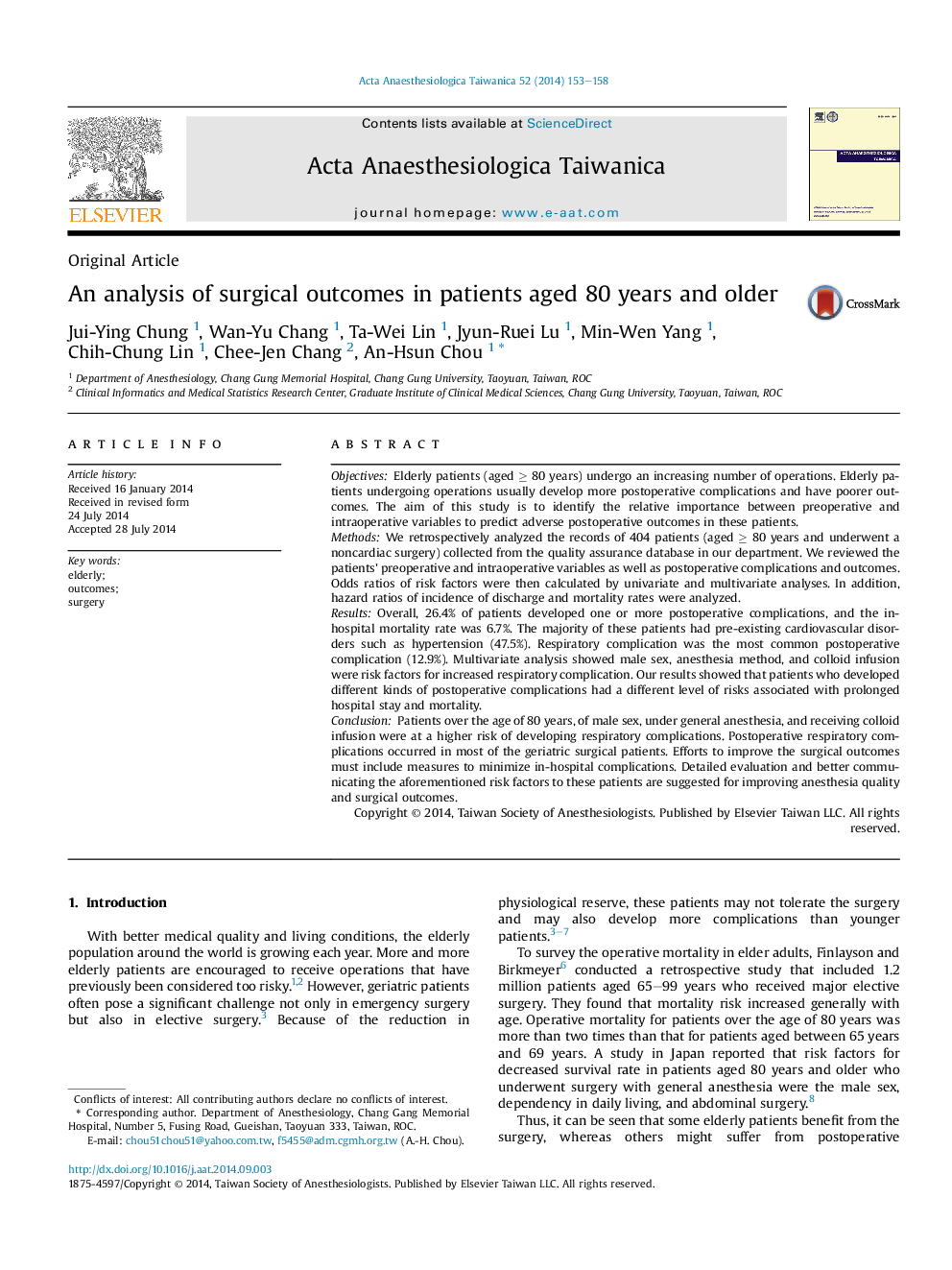| Article ID | Journal | Published Year | Pages | File Type |
|---|---|---|---|---|
| 2741371 | Acta Anaesthesiologica Taiwanica | 2014 | 6 Pages |
ObjectivesElderly patients (aged ≥ 80 years) undergo an increasing number of operations. Elderly patients undergoing operations usually develop more postoperative complications and have poorer outcomes. The aim of this study is to identify the relative importance between preoperative and intraoperative variables to predict adverse postoperative outcomes in these patients.MethodsWe retrospectively analyzed the records of 404 patients (aged ≥ 80 years and underwent a noncardiac surgery) collected from the quality assurance database in our department. We reviewed the patients' preoperative and intraoperative variables as well as postoperative complications and outcomes. Odds ratios of risk factors were then calculated by univariate and multivariate analyses. In addition, hazard ratios of incidence of discharge and mortality rates were analyzed.ResultsOverall, 26.4% of patients developed one or more postoperative complications, and the in-hospital mortality rate was 6.7%. The majority of these patients had pre-existing cardiovascular disorders such as hypertension (47.5%). Respiratory complication was the most common postoperative complication (12.9%). Multivariate analysis showed male sex, anesthesia method, and colloid infusion were risk factors for increased respiratory complication. Our results showed that patients who developed different kinds of postoperative complications had a different level of risks associated with prolonged hospital stay and mortality.ConclusionPatients over the age of 80 years, of male sex, under general anesthesia, and receiving colloid infusion were at a higher risk of developing respiratory complications. Postoperative respiratory complications occurred in most of the geriatric surgical patients. Efforts to improve the surgical outcomes must include measures to minimize in-hospital complications. Detailed evaluation and better communicating the aforementioned risk factors to these patients are suggested for improving anesthesia quality and surgical outcomes.
